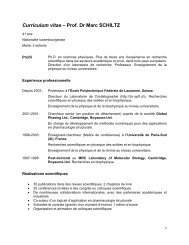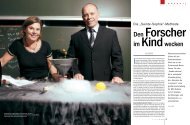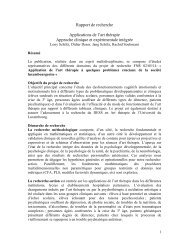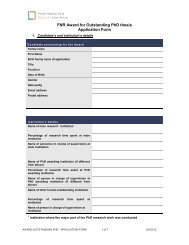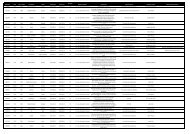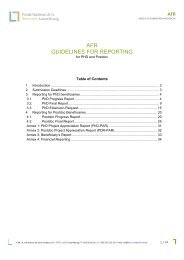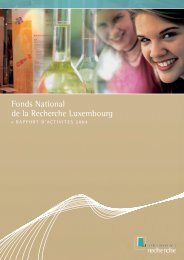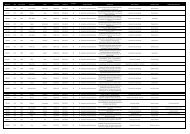CORE 2013 Application Guidelines - FNR
CORE 2013 Application Guidelines - FNR
CORE 2013 Application Guidelines - FNR
You also want an ePaper? Increase the reach of your titles
YUMPU automatically turns print PDFs into web optimized ePapers that Google loves.
<strong>CORE</strong><br />
MULTI-ANNUAL THEMATIC<br />
RESEARCH PROGRAMME<br />
The following special issues should be taken into account:<br />
Informed consent: When describing issues relating to informed consent, it will be necessary<br />
to illustrate an appropriate level of ethical sensitivity, and consider issues of insurance,<br />
incidental findings and the consequences of leaving the study.<br />
Data protection issues: Avoid the unnecessary collection and use of personal data. Identify<br />
the source of the data, describing whether it is collected as part of the research or is<br />
previously collected data being used. Consider issues of informed consent for any data being<br />
used. Describe how personal identify of the data is protected.<br />
Use of animals: Where animals are used in research the application of the 3Rs (Replace,<br />
Reduce, Refine) must be convincingly addressed. Numbers of animals should be specified.<br />
Describe what happens to the animals after the research experiments.<br />
Human embryonic stem cells: Research proposals that will involve human embryonic stem<br />
cells (hESC) will have to address all the following specific points:<br />
• the applicants should demonstrate that the project serves important research aims to<br />
advance scientific knowledge in basic research or to increase medical knowledge for<br />
the development of diagnostic, preventive or therapeutic methods to be applied to<br />
humans.<br />
• the necessity to use hESC in order to achieve the scientific objectives set forth in the<br />
proposal. In particular, applicants must document that appropriate validated<br />
alternatives (in particular, stem cells from other sources or origins) are not suitable<br />
and/or available to achieve the expected goals of the proposal. This latter provision<br />
does not apply to research comparing hESC with other human stem cells.<br />
• the applicants should take into account the legislation, regulations, ethical rules and/or<br />
codes of conduct in place in the country(ies) where the research using hESC is to take<br />
place, including the procedures for obtaining informed consent;<br />
• the applicants should ensure that for all hESC lines to be used in the project were<br />
derived from embryos<br />
• of which the donor(s)' express, written and informed consent was provided freely, in<br />
accordance with national legislation prior to the procurement of the cells.<br />
• that result from medically-assisted in vitro fertilisation designed to induce pregnancy,<br />
and were no longer to be used for that purpose.<br />
• of which the measures to protect personal data and privacy of donor(s), including<br />
genetic data, are in place during the procurement and for any use thereafter.<br />
Researchers must accordingly present all data in such a way as to ensure donor<br />
anonymity;<br />
• of which the conditions of donation are adequate, and namely that no pressure was put<br />
on the donor(s) at any stage, that no financial inducement was offered to donation for<br />
research at any stage and that the infertility treatment and research activities were kept<br />
appropriately separate.<br />
In case of multi-national projects, identify the countries where research will be undertaken<br />
and which ethical committees and regulatory organisations will need to be approached<br />
during the life of the project.<br />
<strong>FNR</strong> / 6, rue Antoine de Saint-Exupéry / B.P. 1777 / L-1017 Luxembourg / T +352 26 19 25 1 / F +352 26 19 25 35 / www.fnr.lu<br />
Last updated 12 December 2012<br />
9 of 46



